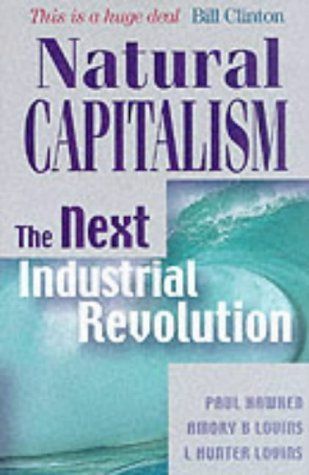
Natural Capitalism The Next Industrial Revolution
The first Industrial Revolution inaugurated 200 years of unparalleled material development for humankind. But the costs and the consequences are now everywhere evermore apparent: the living systems on which we depend are in retreat. Forests, topsoil, grasslands, wetlands, oceans, coral reefs, the atmosphere, aquifers, tundra and biodiversity are limiting factrs - the natural capital on which all economic activity depends. And they are all in decline. Add to that a doubling of the world's population and a halving of available per capita resources in the first 50 years of the 21st century and the inevitability of change is clear.This work offers forms of industry and commerce that can not only enhance enormously the wellbeing of the world's growing population, but will reverse the destruction and pollution of nature and restore the natural processes so vital to the future.The book introduces four central and interrelated strategies necessary to perpetuate abundance, avert scarcity and deliver a solid basis for social development. The first of these is: Radical Resource Productivity - getting two, four, or even ten times as much from the same quantities of materials and energy. A revolution in efficiency that provides the most immediate opportunities for businesses to grow and prosper.The second strategy is: Ecological Redesign - eliminating the very idea of waste by designing industrial systems on the model of ecological ones. Instead, for example, of digging merals out of the ground only to return them to landfill at the end of the product cycle, industrial processes will be designed to reuse materials constantly, in closed circles.The third strategy involves creating: A Service and Flow Economy - shifting from an economy of goods and purchases to one of service and flow, and redefining the relationship between producer and consumer. Affluence will no longer be measured by acquisition and quantity, but by the continuous receipt of quality, utility and performance.The final strategy is: Investing in Natural capital - reversing the worldwide ecosystem destruction to restore and expand the stocks of natural capital. If industrial systems are to supply an increasing flow of services in the future, the vital flow of services from living systems will have to be maintained or increased as well.